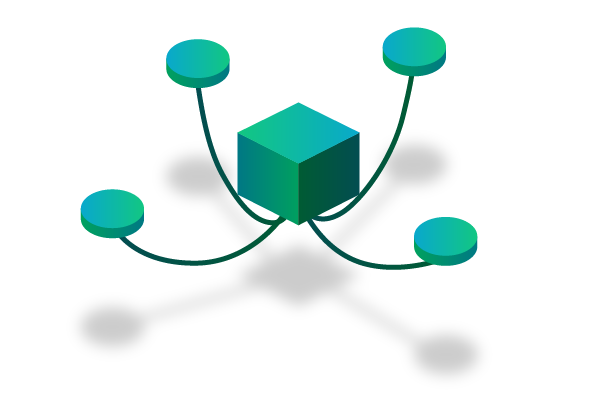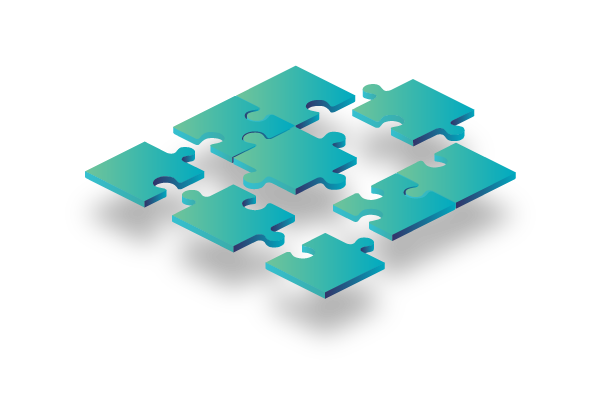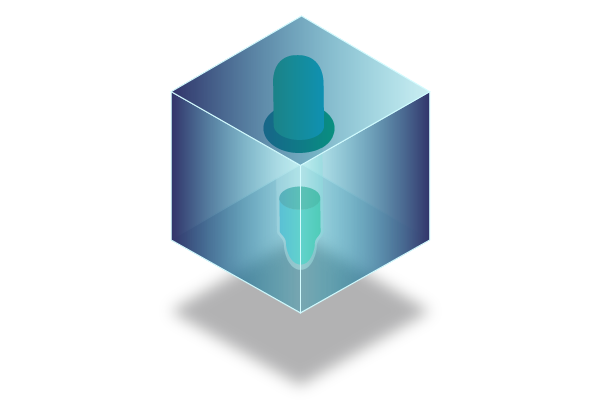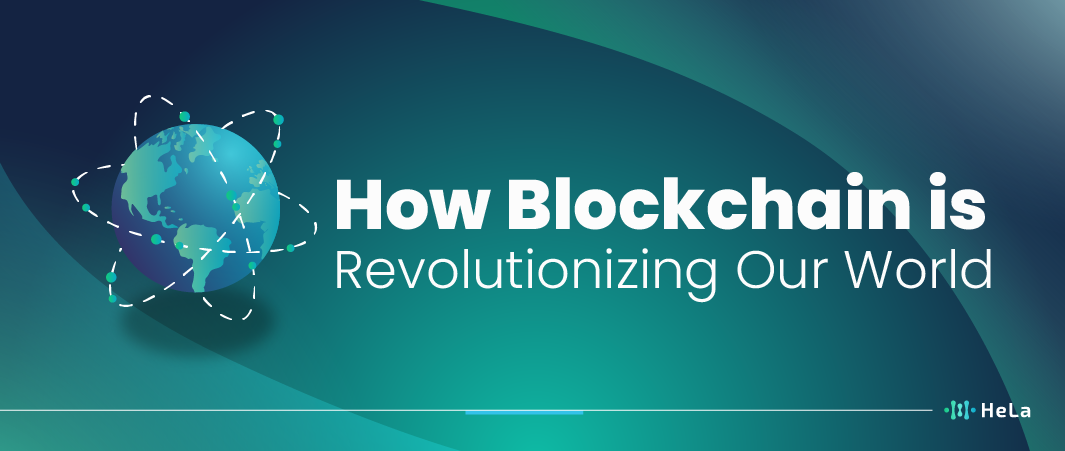What is Blockchain? Blockchain technology, which you might have heard about in connection with cryptocurrencies like Bitcoin, has grown into something really game-changing across many fields. It’s basically a system that works in a special way. Instead of relying on a single central authority, it’s decentralized, which means no one entity has complete control.
Imagine it like a digital ledger that records transactions, and once something’s written in, it can’t be easily changed or deleted. This feature makes it super secure and transparent. Now, this technology isn’t just for money stuff. It’s being used in all sorts of places, from tracking the origin of food to making sure your vote in an election is counted properly. So, in short, blockchain is like a digital superhero that’s stepping up to solve some real-world problems!
What is Blockchain?
Blockchain is like a high-tech digital ledger that’s shared among lots of computers. Its main job is to securely keep track of transactions in a way that’s super safe, open for everyone to see, and almost impossible to change once it’s in there. Unlike regular databases, once info is on a blockchain, it’s set in stone, so you can totally trust it.
Also Read: Top 10 List of Layer 1 in Blockchain
Think of Blockchain as a digital super notepad that’s passed around among a bunch of computers. It’s really good at noting down stuff like who sent what to who and when. The cool part is, once it’s in that notepad, you can be super sure that no one’s gonna sneak in and change what’s written. So, Blockchain is all about making sure everybody can trust what’s written in that notepad, no matter where they are.
Diverse Applications of Blockchain

Beyond cryptocurrencies, blockchain’s potential applications are vast:
1. Supply Chain Management
- Companies use blockchain technology to trace product origins, ensuring authenticity and safety.
- Blockchain enables end-to-end tracking of a product’s journey from its source to consumers.
- It verifies the legitimacy of products, instilling confidence in consumers.
- This technology enhances product quality and safety across the supply chain.
- Blockchain acts as a transparent digital ledger, recording every step in a product’s lifecycle.
- It’s instrumental in efficient supply chain management and maintaining product integrity.
2. Voting Systems
- Blockchain technology ensures a secure and transparent voting system.
- It creates an immutable digital record of each vote, making tampering extremely difficult.
- This increased security can enhance trust in the electoral process.
- Imagine it as a digital ballot box that safeguards the integrity of elections.
3. Healthcare
- Patient privacy in medical records is effectively preserved by utilizing secure storage methods, including the innovative Blockchain technology.
- This approach guarantees the confidentiality of sensitive medical information, preventing unauthorized access.
- By implementing Blockchain, healthcare providers can establish a tamper-proof and transparent ledger for patient data, building trust and security within the healthcare system.
- This initiative not only upholds patient confidentiality but also strengthens the overall integrity of healthcare records.
4. Property Records
- Blockchain technology operates as a secure digital ledger for property ownership records.
- It records property transactions, such as buying and selling, in a way that’s transparent yet tamper-resistant.
- This transparency and immutability build trust among property owners and reduce ownership disputes.
- Property dealings become more secure and transparent, benefiting all parties involved.
5. Smart Contracts
- Self-executing contracts in the realm of Blockchain rely on code to define and execute terms, enhancing clarity and automation.
- These contracts replace traditional legal language with computer code, ensuring trust and automating the contract’s fulfillment.
- They act as digital referees, eliminating the need for intermediaries and simplifying complex agreements.
How Blockchain Operates

Blockchain technology fundamentally relies on a structure where information is grouped into blocks and then securely linked together, forming a continuous chain. Imagine it like building a digital Lego tower. Each block in this chain has a special code called a hash, which acts like a lock connecting it to the previous block. This linkage is crucial because it makes it incredibly tough for anyone to fiddle with the information in a single block. If you try to change something in one block, it’s like trying to untangle a tightly woven necklace; you’d need to redo everything that comes after it, making tampering practically impossible.
In simple terms, think of Blockchain as a digital ledger, kind of like a super-secure digital notebook. It records transactions or information in a way that’s incredibly tough to mess with. This interconnected chain of blocks ensures that once data is added and locked in a block, it’s there to stay, and any attempt to alter it would require changing all the blocks that follow, which is a monumental task. This unique security feature is why Blockchain is becoming the go-to technology for a wide range of applications, from cryptocurrencies like Bitcoin to supply chain tracking and more.
Challenges and Future Prospects of Blockchain
While blockchain offers a myriad of advantages, it’s not without its challenges:
1. Scalability Issues
Blockchain networks, like Bitcoin, encounter scalability challenges when they handle a growing number of transactions. This can result in delays in transaction processing and increased fees, making it more costly for users. These issues arise primarily in blockchains that employ proof-of-work consensus mechanisms, like Bitcoin’s, where the network’s capacity to validate and record transactions becomes strained as more people use it.
2. Energy Consumption
Blockchain technology relies on a process called proof-of-work, which demands substantial computational resources, raising valid concerns about its environmental footprint. The energy-intensive nature of blockchain’s proof-of-work mechanism has led to worries about its impact on the environment, as it requires powerful computers to solve complex mathematical puzzles, consuming a significant amount of electricity.
3. Regulatory Concerns
The decentralized nature of Blockchain creates hurdles for regulators who are figuring out how to adapt rules and laws to this new technology, causing uncertainties about its use in different areas. Blockchain, essentially a distributed ledger technology, spreads data across a network of computers, making it tricky for traditional regulatory frameworks to fit neatly. This challenge has led to a bit of a puzzle in industries like finance, healthcare, and supply chain management, where Blockchain’s potential benefits, like transparency and security, are enticing but need clear guidelines to ensure responsible use.
4. Complexity and Adoption
Blockchain technology still presents a challenge for many people to grasp and incorporate into their daily lives, which in turn hinders its widespread popularity. The intricate nature of how blockchain works, coupled with the struggle to see its practicality, has contributed to its slower adoption in mainstream society.
Promising Future of blockchain

The future of blockchain technology holds immense promise, poised to revolutionize various industries and reshape the way we interact with data, transactions, and trust. Here’s a captivating description of the promising future of blockchain:
1. Integration with IoT
The Internet of Things (IoT), when paired with Blockchain technology, can create a trustworthy and transparent way for devices to communicate. Imagine your smart thermostat securely sharing data with your energy provider without any privacy concerns, or your self-driving car seamlessly interacting with traffic signals while ensuring the safety of your personal information. Blockchain, a digital ledger that records transactions across multiple devices, adds an extra layer of security by making data tamper-proof and transparent. This combination not only enhances the reliability of IoT devices but also safeguards your privacy, paving the way for a more connected and secure digital world.
2. Decentralized Finance (DeFi)
Blockchain technology plays a central role in the DeFi (Decentralized Finance) movement, which seeks to establish a financial system that operates without the need for middlemen or intermediaries. At its core, blockchain enables the creation of a transparent and secure network where financial activities like lending, borrowing, trading, and earning interest can occur directly between individuals, cutting out traditional financial institutions. This innovative approach aims to increase accessibility to financial services, reduce costs, and provide more control to individuals over their own financial assets.
3. Interoperability
In the future, Blockchain technology could enable different blockchains to talk to each other and easily exchange information. This potential for interconnectedness has the potential to create a more efficient and streamlined system. Imagine it like different branches of a library sharing their catalog information, making it easier for everyone to find the books they need.
Also Read: 6 Top Ethereum Killers To Buy in 2023
4. Enhanced Security Protocols
As technology continues to advance, we might see the development of better and safer consensus algorithms within the world of blockchain. These new algorithms could potentially cut down on the energy used for transactions and make them happen faster. So, in the future, Blockchain may become even more efficient and environmentally friendly, while also speeding up how transactions are processed.
Conclusion
Blockchain technology is undoubtedly a game-changer, with its potential to transform various industries. It’s not just about revolutionizing financial transactions; its applications span far and wide. From ensuring transparency in supply chains to enhancing the security of data, blockchain’s possibilities are constantly expanding. As more and more industries recognize the advantages it offers, blockchain is on the brink of reshaping our digital world. It provides secure, transparent, and decentralized solutions that are becoming increasingly vital as we navigate the intricacies of our interconnected digital age.
In this ever-evolving landscape, embracing blockchain could be the key to addressing the challenges we face. Its ability to provide trust and accountability in a decentralized manner is a significant step towards a more efficient and secure digital ecosystem. As we move forward into this digital era, harnessing the power of blockchain holds the promise of creating a more transparent, secure, and interconnected world.
Disclaimer: The information provided by HeLa Labs in this article is intended for general informational purposes and does not reflect the company’s opinion. It is not intended as investment advice or recommendations. Readers are strongly advised to conduct their own thorough research and consult with a qualified financial advisor before making any financial decisions.

Joshua Soriano
I am Joshua Soriano, a passionate writer and devoted layer 1 and crypto enthusiast. Armed with a profound grasp of cryptocurrencies, blockchain technology, and layer 1 solutions, I've carved a niche for myself in the crypto community.
- Joshua Soriano#molongui-disabled-link
- Joshua Soriano#molongui-disabled-link
- Joshua Soriano#molongui-disabled-link
- Joshua Soriano#molongui-disabled-link

